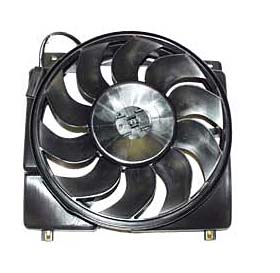 Engine overheating or poor air conditioning performance can be caused by an engine or A/C condenser cooling fan that fails to come on. In many cases, the underlying fault is a bad cooling fan relay.
Engine overheating or poor air conditioning performance can be caused by an engine or A/C condenser cooling fan that fails to come on. In many cases, the underlying fault is a bad cooling fan relay.
The quickest way to tell whether or not the electric fan(s) are working is to start the engine, let it reach normal operating temperature and then turn the A/C on. The cooling fan in the engine compartment should turn on to pull air through the radiator and A/C condenser. On many vehicles, there may be two fans: a main cooling fan for the radiator, and a second fan for the condenser. Both fans should come on when the A/C is on.
If one or both fans fail to come on, the lack of additional cooling provided by the fan may cause poor A/C cooling performance, and it may cause the A/C compressor to overheat and fail. The engine may also run hot and overheat, too.
Problems in the Cooling Fan Circuit
The typical electric cooling fan circuit includes a temperature sensor, a relay, a control module and the fan motor. The relay is the component that fails most often, so be sure to test the relay as well as its power supply and ground connections.
A good relay coil will typically read 40 to 80 ohms. If resistance is high, the coil may still be working but it is failing, or it may not work when electrical loads are high. If the coil has no resistance, it is open and has failed. Replace the relay.
Another simple relay test is to shake it. If you hear something rattling inside, the relay armature is probably broken.
Types of Electric Cooling Fan Relays
There are three basic types of relays:
- Normally open are the most common type. The armature closes when the coil is energized to route power to the fan motor.
- Normally closed. The armature is normally closed and is pulled open when energized.
- Dual relay. This type conducts current when open and when closed in two different circuits.







